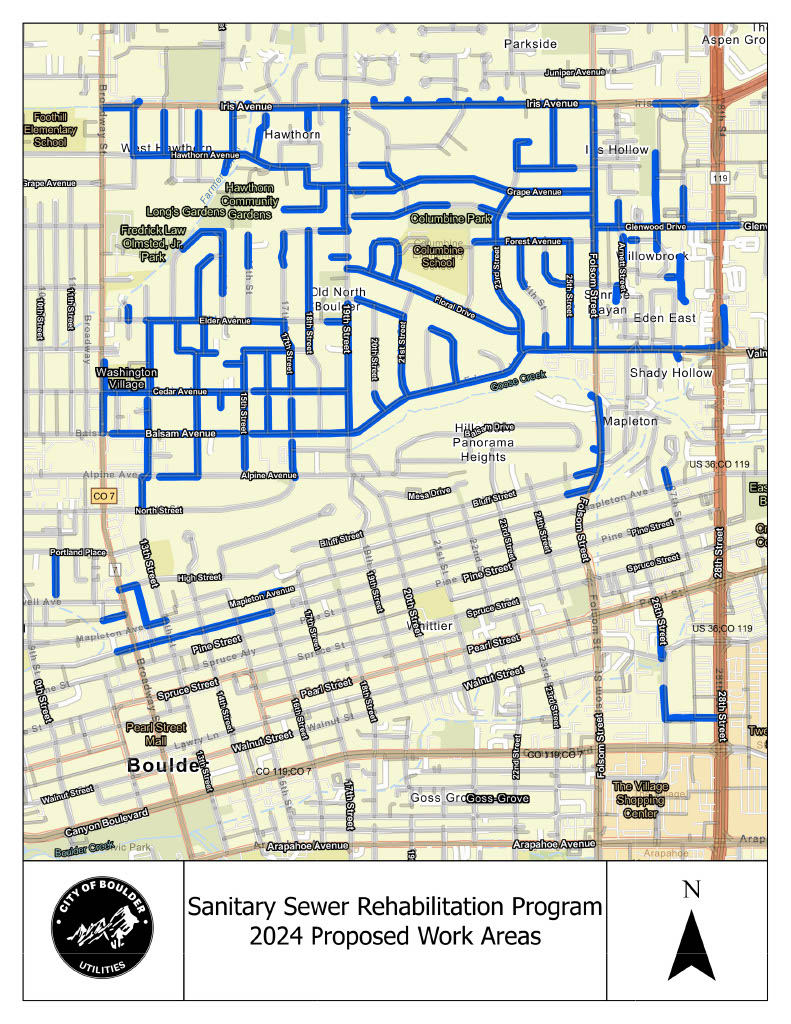The City of Boulder's sanitary sewer system consists of underground pipelines used to collect and transport untreated wastewater to the city's wastewater treatment facility. A large portion of the city’s sanitary sewer system was constructed in the 1940s through 1960s when it was common to construct sewers using clay pipes. These sewer pipes are now beginning to reach the end of their useful life.
Holiday Closures
In observance of the Christmas and New Year’s holidays, the City of Boulder is adjusting its operations schedules.

